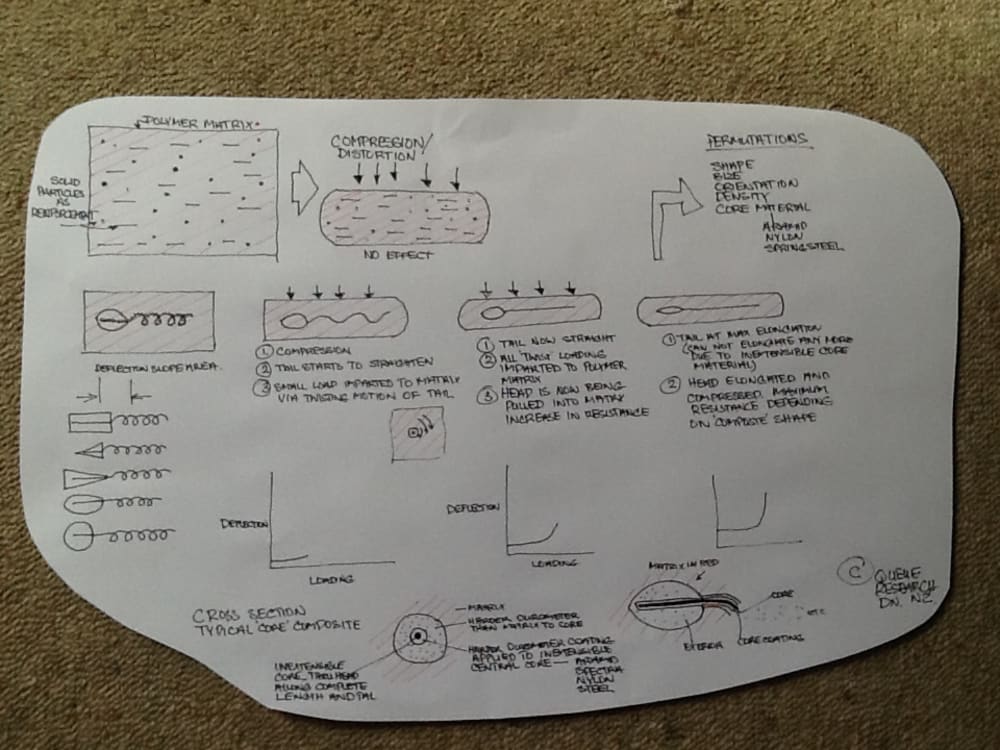This technology is related and was realised by the study of biological polymers, their chemical composition and modifications to suit specific evolutionary adaptaptions.
Most manufactured polymers are chemical combinations designed to meet a singular specific need, whereas biological polymers are combinations of such individual chemical combinations. When described in a simple manner they are 'mechanical composites', it is not only the chemical bonds required to form the material but also the ' islands' of differing material and their physical shapes which interact to produce the required mechanical result: the ability to stretch and deform and also to interact mechanically with the surrounding matrix. Common tyres of virtually any type as an example, hold the polymer which supplies the necessary adhesion to the road, impact deflection and other charisterics by physically joining a singular type of polymer to a reinforced steel/ nylon/ aramid carcass to enable optimum tread patch contact with the road surface: the polymer itself is a combination of elements which can be softened or hardened by varying the combinations of the raw constituents ( and also copied by any other tyre manufacturer!) Bilogical polymers and the mechanical configuration about to be described function not as a singular polymer as the tyres tread composition, but by having the supporting structure and the tread compound interspersed with each other. This combination elucidated in the sketches shows that they are in fact a polymer within a polymer, within a polymer and that the supporting structure, rather than being a separate structure as in the case of a tyre, is in fact bound and utilised within a polymer of fife ring durometer to the matrix that is is held in. By the adjustment in physical shape and size, their orientation and density of such shapes and sizes within the matrix such a composite can achieve a number of functions that a singular polymer, eg as the tyre example, can not.
If a singular example is explained it can be seen that depending on the parameters previously explained utilised in its manufacture it has the ability to deflect and resist such deflection in a proportionate manner. Such deflection curves may be adjusted by the orientation size and density of the internal composites. In the case of a tyre tread with all deflection resistance designed across the tread, such resistance would only come into play with side loading of the sipes in cornering. Such loading on a conventional tyre would normally deflect the tread block with a loss of adhesion which is not the case with this technology. A similar example may be proposed for earthquake loads along and across a building or other rigid structure by orienting blocks of such polymer under the building, primary secondary and other harmonics may be absorbed by the material. By manufacturing such a composite polymer at a microscopic level, say as a submarine coating, then the coating can be designed to absorb and not reflect any frequencies now used in the sonar region for locating submarines.
Like this entry?
-
About the Entrant
- Name:Kenneth Steel
- Type of entry:individual
- Software used for this entry:No
- Patent status:none

